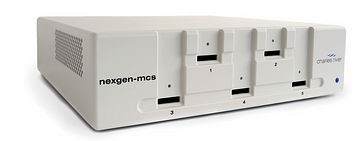Plate Readers for Endotoxin Measurements and Validation
Plate readers commonly used for endotoxin measurements are designed to detect and measure the signals produced during the endotoxin detection assays. They typically consist of the following key components:
-
Optical System:
Plate readers have a sophisticated optical system that includes a light source and detectors. The light source emits light of a specific wavelength or multiple wavelengths, depending on the detection method used (e.g., absorbance, fluorescence). The detectors capture the signals generated by the interaction between the endotoxin and the assay components.
-
Microplate Tray:
Plate readers feature a microplate tray or holder where the microplates containing the samples, standards, and reagents are placed. The tray can accommodate different plate formats, such as 96-well or 384-well plates, allowing for high-throughput testing.

-
Filters or Monochromators:
Depending on the detection method and assay requirements, plate readers may employ filters or monochromators to select specific wavelengths of light. Filters are fixed at predefined wavelengths, while monochromators offer more flexibility by allowing the selection of specific wavelengths within a range.
-
Measurement Modes:
Plate readers can operate in different measurement modes, such as absorbance, fluorescence, and luminescence, depending on the type of endotoxin detection assay being performed. Each mode requires specific components and settings to optimize signal detection and measurement.
-
Control Software:
Plate readers are equipped with control software that allows for instrument operation, data acquisition, and analysis. The software provides user-friendly interfaces for setting up measurement parameters, selecting assay protocols, and analyzing the obtained results. It often includes data export options and data processing features for further analysis.
-
Data Output:
Plate readers provide various options for data output, including numerical values, graphical representations, and customizable reports. Results can be displayed in real-time on the instrument's screen or exported to external devices, such as computers, for further analysis and documentation.
Plate readers used for endotoxin measurements should be validated and calibrated regularly to ensure accurate and reliable results. Instrument validation typically involves verifying the accuracy and precision of the measurements using reference standards or control samples. Calibration involves adjusting the instrument settings and verifying the performance against known standards or reference materials.
Validating an endotoxin plate reader typically involves several steps to ensure its accuracy, precision, and reliability. Here is a general overview of the validation process:
-
Installation Qualification (IQ):
Verify that the plate reader has been installed correctly and meets the required specifications. This may involve checking the power supply, connections, and any additional accessories or modules.
-
Operational Qualification (OQ):
Perform a series of tests to ensure that the plate reader operates within the specified parameters. This may include testing the instrument's temperature control, shaking or mixing mechanisms (if applicable), and plate detection and positioning systems.
-
Performance Qualification (PQ):
Validate the performance of the plate reader by running a series of tests using known endotoxin standards or control samples. This ensures that the instrument can accurately detect and measure endotoxin concentrations. The PQ may involve:
-
Accuracy and Linearity:
Determine the accuracy and linearity of the plate reader by analyzing samples with different known endotoxin concentrations. Compare the measured values with the expected values to assess the instrument's accuracy and linearity across the assay range.
-
Precision and Repeatability:
Evaluate the precision and repeatability of the plate reader by analyzing replicates of the same sample. Calculate the coefficient of variation (CV) or percent relative standard deviation (%RSD) to assess the instrument's precision.
-
Limit of Detection (LOD) and Limit of Quantitation (LOQ):
Determine the LOD and LOQ of the plate reader by analyzing samples with known low-endotoxin concentrations. Ensure that the instrument can reliably detect and quantify endotoxin levels above the LOD and within the dynamic range of the assay.
-
Robustness and Interference:
Assess the robustness of the plate reader by evaluating its performance under different conditions, such as changes in incubation time, temperature, or other assay parameters. Additionally, test for any potential interferences or matrix effects that may affect endotoxin measurements.
-
Calibration:
Calibrate the plate reader regularly according to the manufacturer's instructions. This may involve using certified reference standards or control samples with known endotoxin concentrations to verify and adjust the instrument's measurements.
-
Documentation:
Maintain comprehensive documentation of the validation process, including protocols, test results, calibration records, and any deviations or corrective actions taken. This documentation is essential for compliance with regulatory requirements and ensuring traceability of the instrument's performance.